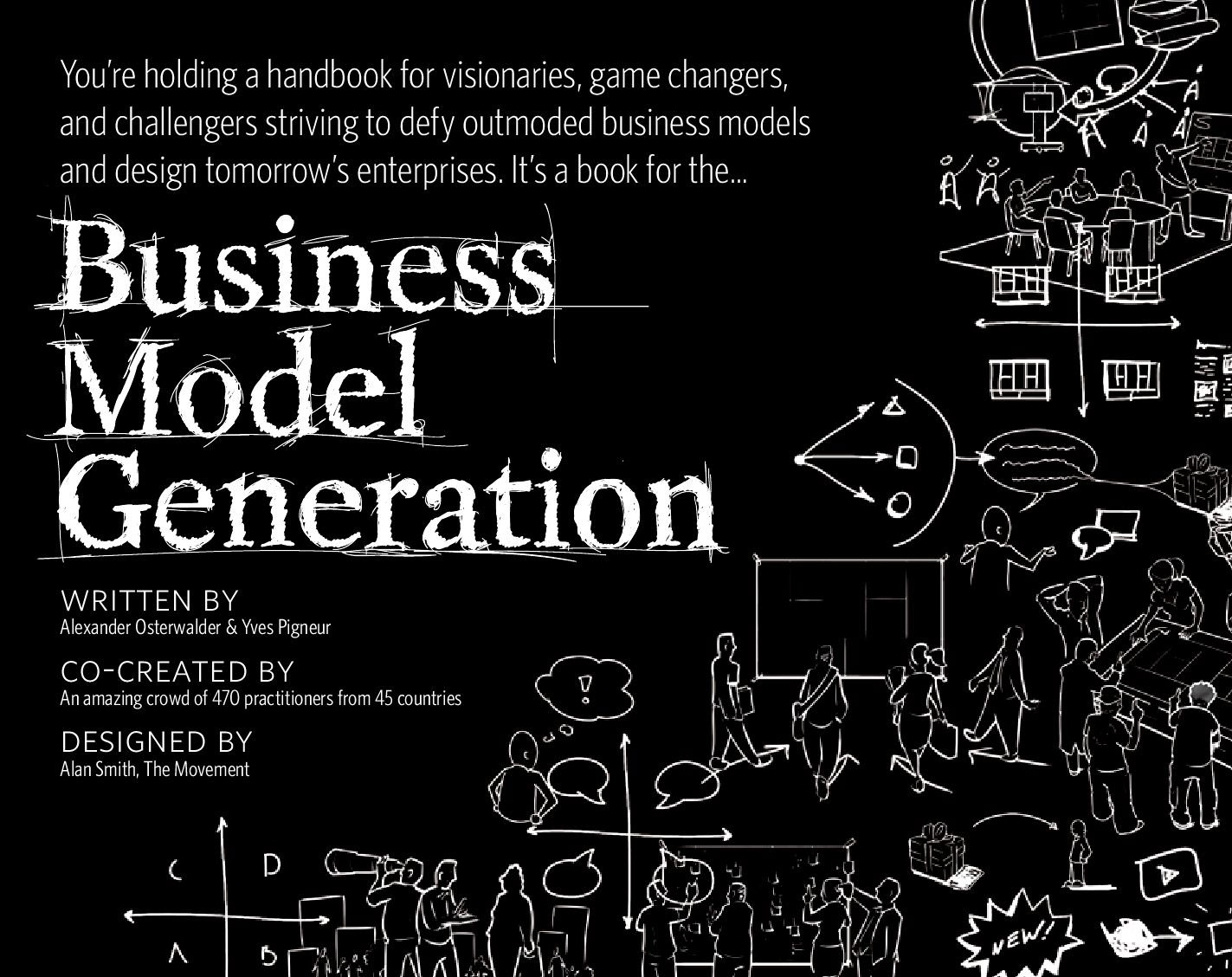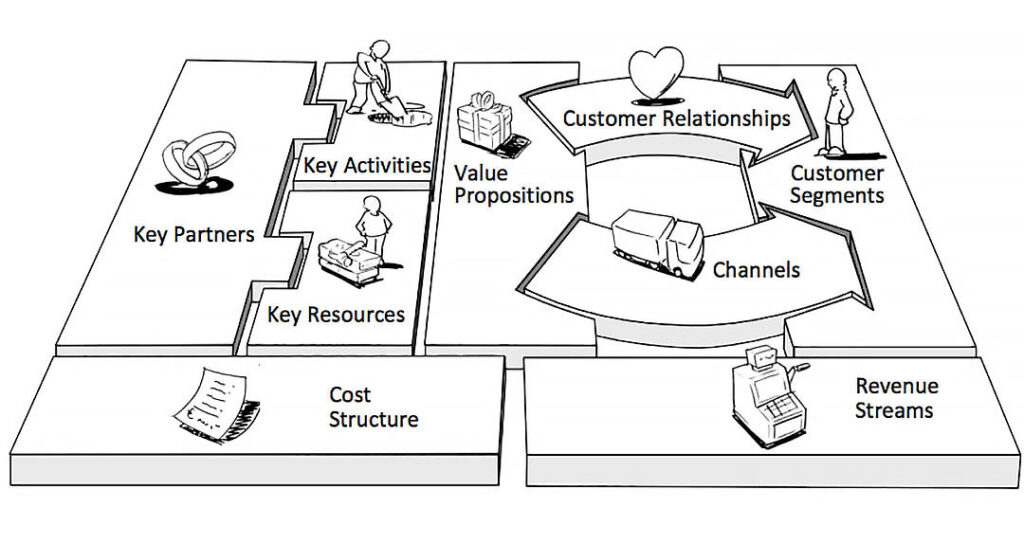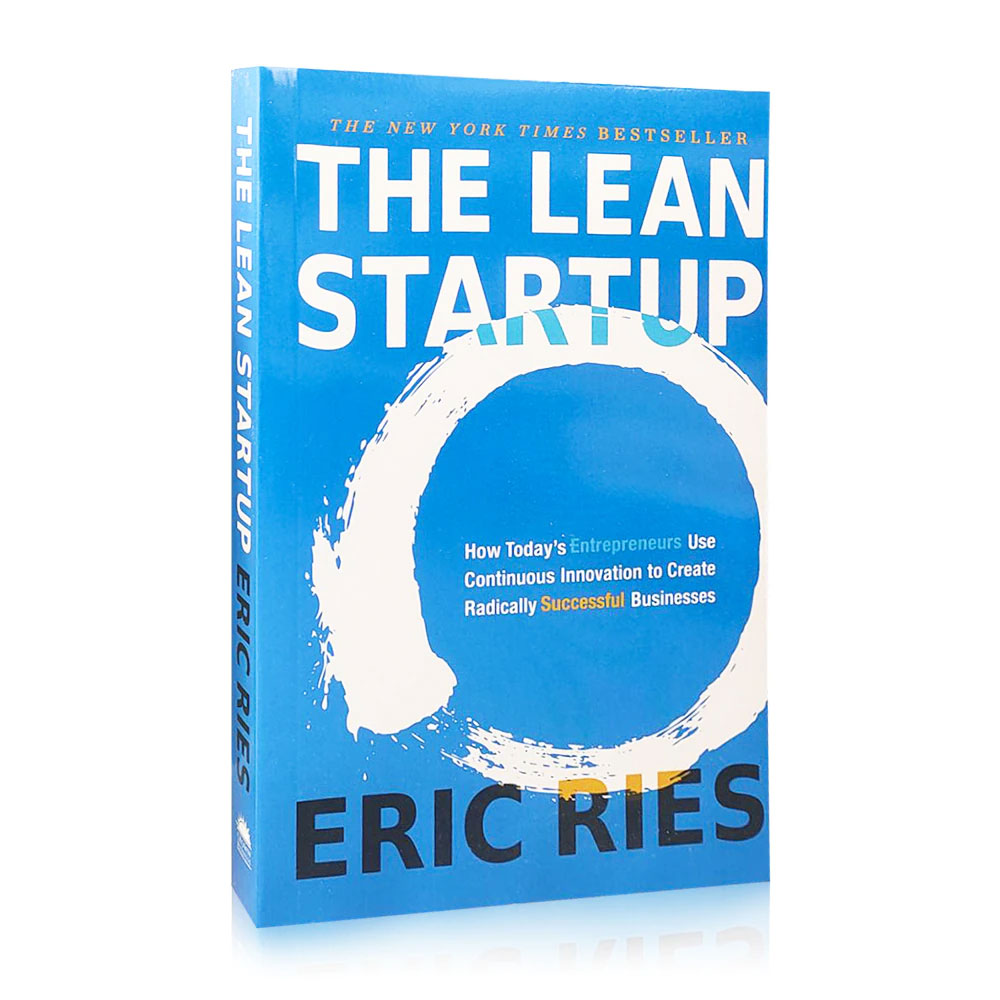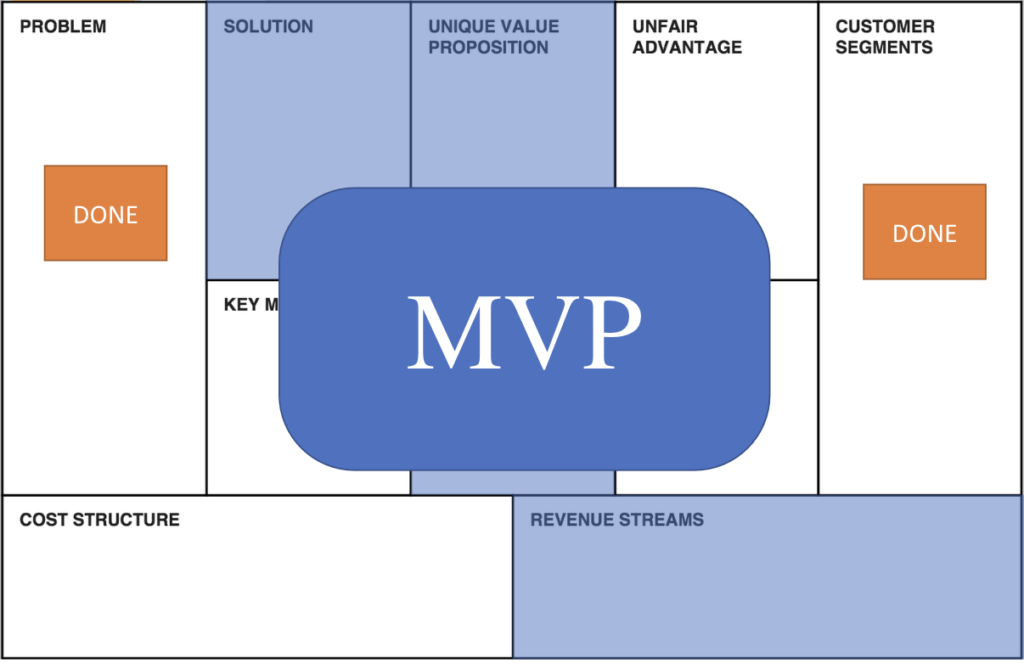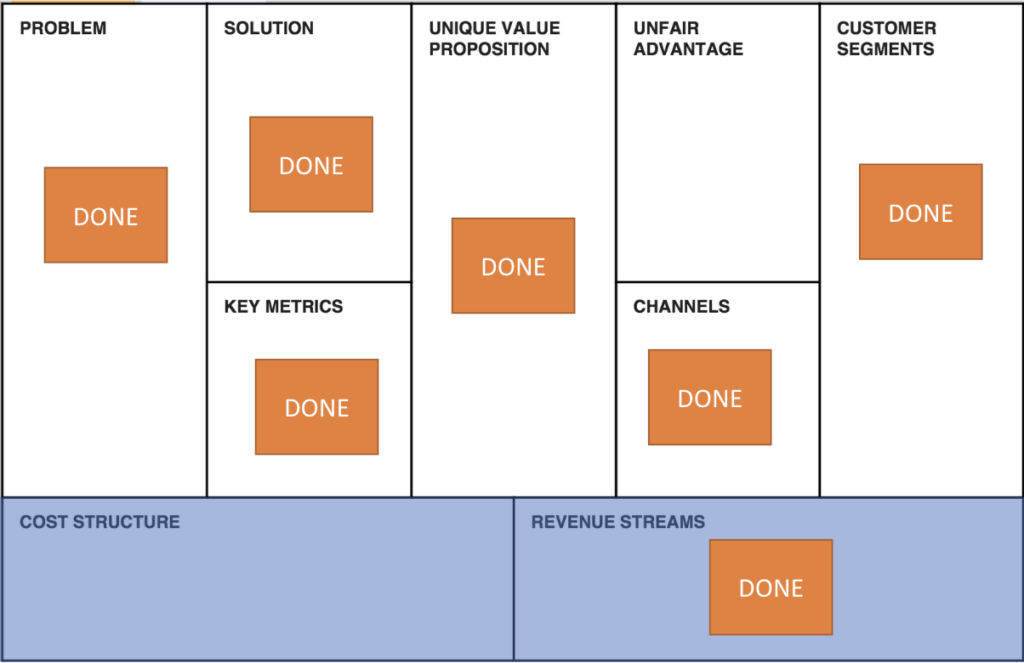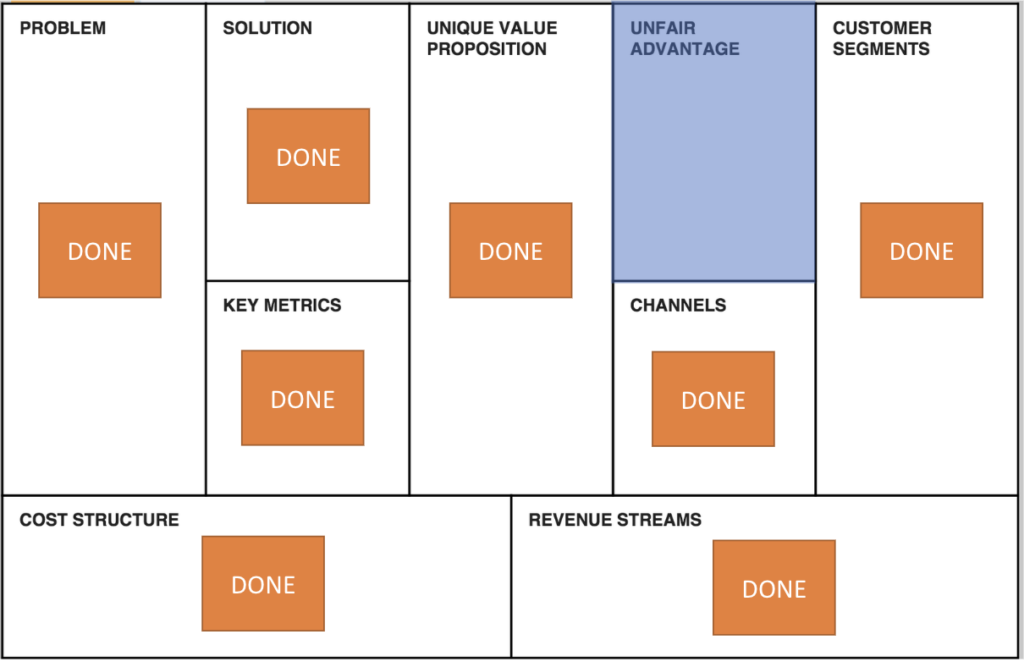The foundation of business models should always be a Business Model Canvas. This canvas will provide a visual prompt for participants to focus on the crucial criteria. The aim of a business model canvas is to focus the discussion on strategic thinking rather than being distracted by small operational details. The building blocks that form this canvas make it dynamic. This means some options in certain sections will impose limits on or amplify other sections. However, in this article, I will discuss the Eric Reis model against the classic Osterwalder canvas to see why the former would be a better fit for startups.
Alexander Osterwalder and Classic Canvas
A business model describes the rationale of how an organization creates, delivers, and captures value. A classic canvas consists of nine different building blocks:
- Key Partners: You can start to control more market share simply by working together with other businesses. This cooperation can lead to a superior product and better supplier links.
- Key Activities: Your company will have its own key activities that lead to profit.
- Value Propositions: These are groups of benefits that incentivize clients to work with you over your competitors. You can improve this category by innovating new products or optimizing them to fit client needs.
- Customer Relationships: Different industries and customers require different types of assistance.
- Customer Segments: Try to target specific groups of customers to gain a competitive advantage in a few key areas. These groups are called customer segments.
- Key Resources: These resources can be used to gain a competitive advantage. This includes superior talent or land.
- Channels: You must develop communication channels other than advertising. Every product must be able to be scrutinized.
- Cost Structure: Your cost structure will determine your business structure. This is because your cost structure will place constraints on other parts of the business.
- Revenue Streams: The authors describe the revenue streams as the arteries of the business model. This is because they obtain income but impose certain constraints on operations.
Business models can be organized by similar characteristics, by similarities in how they use the building blocks, or by similar behaviors. Broadly, these similarities are business model patterns, and Osterwalder evaluates how traditional business concepts can be made to fit the Business Model Canvas. However, for fast-growing startups especially in tech, this model needs some modifications which the lean model by Eric Reis tries to address.
“Like seeing the doctor for an annual exam, regularly assessing a business model is an important management activity that allows an organization to evaluate the health of its market position and adapt accordingly.” Alexander Osterwalder
Eric Ries and Lean Canvas
Most startups fail. Eric Ries knows firsthand. He has been there. When he cofounded software company IMVU, he and his team tried a different approach by rapidly creating and releasing their product before it was perfected, only to continuously update, revise and re-release it, based in part on customer feedback. It worked. Then it became the main idea behind the lean startup philosophy. How to use the most precious resource of a startup (Time) to find a scalable and profitable business model before running bankrupt?
That idea changed some blocks of the classic business model canvas. Here are the changes:
- There are no more sections for Customer Relationships, Key Resources, Key Activities, and Key Partners.
- It introduced 4 new blocks instead including Unfair Advantage, Key Metrics, Solution, and Problem
How to craft a lean business model canvas (6 Steps)
1. The first step is to start with a problem a segment of a market is facing. Just keep in mind to go into deeper levels of the problem using the 5-why technic, know the specific characteristics of the early adaptors from your segment of the market, and finally set different parts for “users” and “customers” if applicable.
2. The next step is to define the features of your minimum viable product (MVP) by filling these three blocks: Solution, Unique value proposition, and Revenue stream. One trick to come up with better unique value propositions is to use the bigger players in your industry. For example, you can say it’s like Airbnb but cheaper or it’s Uber but safer. Overall, in this step, you are trying to come up with a profitable MVP to attract the target customer to your solution for a specific problem.
3. In this stage, the channel’s block will be completed and it the stage you will probably need a good understanding of marketing principles and target customer behavior in different channels. Channel means how your customer will have access to your solution.
4. Key metrics are the next step, which includes clearly defining the success of the business model and prioritizing the performance indicators to come up with 1 to 5 metrics indicating the most important customer behavior to your business model.
5. The next block is the cost structure of your business. However, in order to reliably complete this block you should write down the structure considering your revenue stream and maybe revise it to balance the financial aspect of the business model.
6. Finally, you should come up with the unfair advantage that is the last line of defense in your business model. It is the differentiation that cannot be copied easily. As the book discusses, counterintuitively, the first mover is one of the weakest unfair advantages, and most of the time being a fast follower is a better option.


